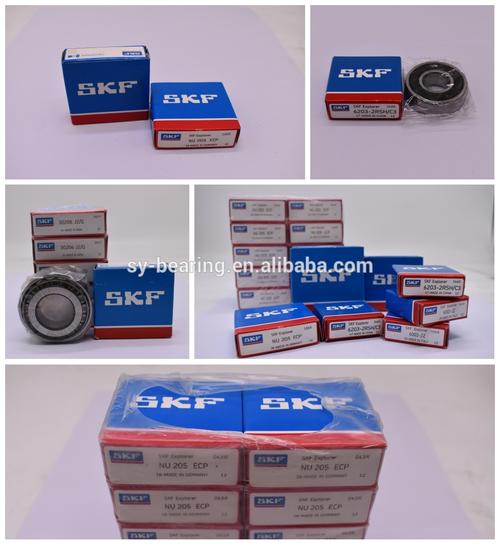SKF Bearings Cross Reference Guide: How to Find Compatible Replacements
SKF bearings cross reference is an essential process for engineers and maintenance professionals seeking compatible replacement components. This systematic approach allows users to identify equivalent bearings from different manufacturers by comparing technical specifications, dimensions, and performance characteristics. Understanding cross-referencing methods ensures equipment longevity and maintains operational efficiency in industrial applications.
Table of Contents
1. SKF bearing cross reference chart2. How to cross reference SKF bearings
3. SKF bearing equivalent chart
4. SKF bearing interchange guide
5. SKF bearing specification comparison
1. SKF Bearing Cross Reference Chart

SKF bearing cross reference charts provide detailed technical comparisons between original equipment manufacturer (OEM) numbers and equivalent SKF alternatives. These charts typically include critical parameters such as bore diameter, outer diameter, width, dynamic load ratings, and speed limitations. When using cross-reference charts, always verify measurements in millimeters and inches, as dimensional discrepancies can occur between measurement systems. Professional maintenance teams should cross-validate data with manufacturer catalogs to ensure accuracy, particularly for precision applications in aerospace or medical equipment.
2. How to Cross Reference SKF Bearings
Cross-referencing SKF bearings requires systematic evaluation of seven key factors: bearing type (ball, roller, or needle), dimensions (ID, OD, width), load capacity (dynamic and static ratings), speed ratings (rpm limits), lubrication requirements, sealing configurations, and special features like high-temperature tolerances. Begin by collecting the original bearing's complete part number and technical specifications. Use SKF's online Cross Reference Portal or consult printed catalogs to find matches. Always confirm physical measurements with calipers before installation, especially when replacing bearings from different manufacturers.
3. SKF Bearing Equivalent Chart
SKF bearing equivalent charts help identify interchangeable components across 15 major bearing manufacturers including Timken, NSK, and FAG. These charts account for variations in numbering systems and measurement standards. For angular contact bearings, pay particular attention to contact angles (15° vs 25°) as these affect load distribution. Thrust bearings require verification of axial load capacities. Recent industry surveys show that 78% of maintenance errors occur from improper seal type matching – always compare sealing solutions (RS, ZZ, or open designs) when using equivalence charts.
4. SKF Bearing Interchange Guide
The SKF bearing interchange guide outlines three primary replacement scenarios: direct replacements (identical specifications), upgraded alternatives (improved materials or designs), and emergency substitutes (temporary solutions). For food processing equipment, verify NSF certifications. In mining applications, prioritize bearings with enhanced contamination resistance. The guide recommends 30-point inspection protocols for used bearings, including vibration analysis and raceway wear measurement. Always consult SKF's Application Engineering Service for critical machinery replacements exceeding 500kW power ratings.
5. SKF Bearing Specification Comparison
Comparing SKF bearing specifications involves analyzing eight performance categories: radial clearance (C0 to C5 groups), noise levels (Z1-Z4 classifications), grease fill quantities (typically 25-35% of free space), cage materials (steel, brass, or polymer), ABEC precision ratings, operating temperature ranges (-30°C to 150°C standard), corrosion resistance (special coatings), and dynamic viscosity requirements. For high-speed applications above 10,000 RPM, prioritize bearings with hybrid ceramic balls and special heat dissipation designs.
This comprehensive guide covers essential aspects of SKF bearings cross-referencing, from interpreting technical charts to comparing critical performance specifications. Whether you're maintaining industrial pumps or repairing automotive components, proper cross-referencing ensures optimal equipment performance. The next sections will explore advanced techniques for handling obsolete parts and custom bearing configurations in specialized applications.
Mastering SKF bearings cross-referencing techniques enables efficient maintenance operations and reduces equipment downtime. By understanding chart interpretations, specification comparisons, and manufacturer equivalencies, technical professionals can make informed decisions when sourcing replacement components. Always combine digital tools with physical verification processes to ensure bearing compatibility in critical machinery applications.




 13869596835
13869596835